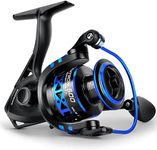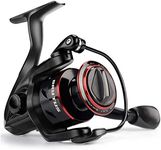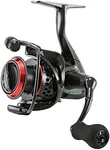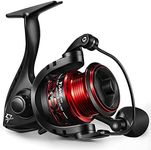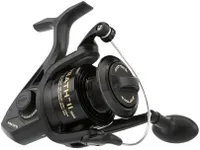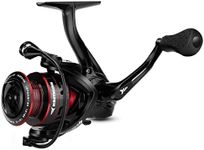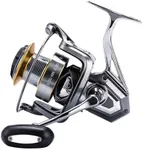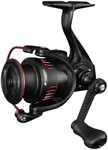Buying Guide for the Best Ultralight Fishing Reels
Choosing the right ultralight fishing reel can significantly enhance your fishing experience, especially if you enjoy targeting smaller fish species or prefer a more delicate approach. Ultralight fishing reels are designed to be lightweight and easy to handle, making them ideal for long fishing sessions without causing fatigue. To find the best fit for you, it's important to understand the key specifications and how they align with your fishing needs.WeightThe weight of an ultralight fishing reel is crucial because it affects how comfortable the reel is to use over extended periods. Lighter reels are easier to handle and reduce fatigue, which is especially important for ultralight fishing where you might be casting frequently. Generally, ultralight reels weigh between 5 to 8 ounces. If you plan on fishing for long hours or have a smaller build, opt for the lighter end of the spectrum. If you need a bit more durability and can handle a bit more weight, you might go for something slightly heavier.
Gear RatioThe gear ratio of a fishing reel indicates how many times the spool rotates with one turn of the handle. This is important because it affects the speed at which you can retrieve your line. Common gear ratios for ultralight reels range from 5.0:1 to 6.2:1. A higher gear ratio (like 6.2:1) means faster retrieval, which is useful for catching fast-moving fish. A lower gear ratio (like 5.0:1) provides more torque, which can be beneficial when reeling in larger fish. Choose a gear ratio based on the type of fish you are targeting and your preferred fishing style.
Drag SystemThe drag system on a fishing reel allows you to control the resistance a fish feels when it pulls on the line. This is important for preventing line breakage and for tiring out the fish. Ultralight reels typically have a maximum drag of 5 to 10 pounds. If you are targeting smaller fish, a lower drag setting (around 5 pounds) is usually sufficient. For slightly larger fish or if you want more control, look for a reel with a higher drag capacity. Make sure the drag system is smooth and easy to adjust.
Line CapacityLine capacity refers to the amount of fishing line that the reel can hold, usually measured in yards for a specific line weight. This is important because it determines how much line you have available to cast and fight fish. Ultralight reels typically hold less line, with capacities around 100 to 150 yards of 4 to 6-pound test line. If you are fishing in smaller bodies of water or targeting smaller fish, a lower line capacity is sufficient. For larger bodies of water or if you expect longer fights with fish, opt for a reel with a higher line capacity.
Ball BearingsBall bearings in a fishing reel help ensure smooth operation and reduce friction during casting and retrieval. This is important for maintaining the reel's performance and longevity. Ultralight reels usually have between 4 to 10 ball bearings. More ball bearings generally mean smoother performance, but also a higher price. For casual fishing, 4 to 6 ball bearings should be adequate. If you want a very smooth and high-performance reel, look for one with more ball bearings.
MaterialThe material of the reel affects its weight, durability, and resistance to corrosion. Common materials for ultralight reels include aluminum, graphite, and carbon fiber. Aluminum reels are durable and resistant to corrosion but can be slightly heavier. Graphite reels are lighter and more affordable but may not be as durable. Carbon fiber reels offer a good balance of light weight and strength but are usually more expensive. Choose a material based on your preference for weight, durability, and budget.

